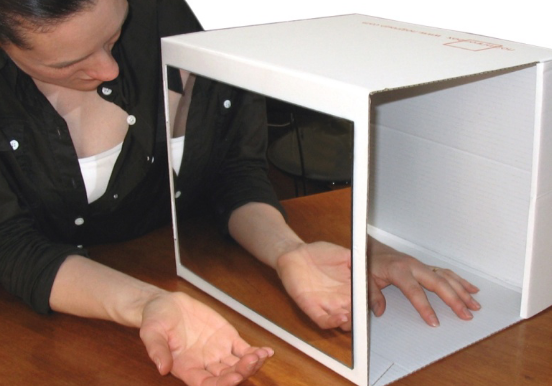Formation continue en ergothérapie : 17 conseils pour rester à la pointe
Classé sous Non classé
Introduction to Occupational Therapy Continuing Education
Continuing education (CE) is not just a professional requirement—it’s a catalyst for lifelong learning, better patient care, and personal growth in the occupational therapy (OT) field. In 2025, the demand for updated, evidence-based practices is stronger than ever. That’s why formation continue en ergothérapie isn’t something to delay or treat as a chore—it’s your secret weapon to staying relevant and inspired in your career.
OTs and occupational therapy assistants (OTAs) across the U.S. are required to complete a specific number of continuing education units (CEUs) each renewal cycle. However, these requirements can vary widely depending on your state’s regulations and the type of license you hold.
Whether you’re renewing your license for the first time or planning to specialize in pediatrics, mental health, or neurorehabilitation, this guide will walk you through the key aspects of occupational therapy continuing education.

Key Benefits of Continuing Education for Occupational Therapists
Continuing education in OT offers multiple personal and professional advantages:
1. Professional Growth
Engaging in ongoing learning exposes you to new tools, treatment strategies, and therapeutic models that enhance your clinical skills and career trajectory.
2. Staying Updated with Trends
From trauma-informed care to assistive tech, CEUs keep you aligned with the most current practices and evidence-based approaches in occupational therapy.
3. Improved Patient Outcomes
CE courses are designed with real-world applications in mind. You’ll be able to implement what you learn to provide more efficient and compassionate care.
Understanding State CE Requirements
Each state sets its own requirements for CEUs:
- Californie requires 24 contact hours every two years.
- Texas mandates 30 hours, including ethics or jurisprudence.
- New York expects 36 hours within a three-year renewal cycle.
To avoid missteps:
- Visit your state OT board website.
- Use AOTA’s state-by-state licensure lookup.
- Document every completed course in case of audits.
Failure to comply can lead to license suspension or costly penalties.
Types of CEU Courses Available
The beauty of CE in 2025 is its flexibility. Here are the most popular formats:
- In-Person Workshops: Best for hands-on skills and networking.
- Webinars and Online Modules: Great for convenience and variety.
- Self-Paced Learning: Perfect for busy professionals needing flexibility.
- Live Virtual Events: Offer real-time interaction without travel.
Accredited Providers and Course Platforms
Make sure your CEUs count. Courses should be:
- Approuvé par l'AOTA or state board-recognized.
- Offered by known platforms like Académie de thérapie de la main
- Reviewed for relevance, depth, and instructor credibility.
Popular CE Topics in 2025
Occupational therapy is evolving rapidly, and CEU providers are keeping pace. These are the most in-demand topics this year:
1. Hand Therapy
CEUs in hand therapy provide specialized training in treating upper extremity injuries, post-surgical rehab, and fine motor skill recovery.
2. Neurorehabilitation
Therapists working with stroke, TBI, or spinal cord injury patients are enrolling in courses about neuroplasticity, adaptive equipment, and mobility training.
3. Mental Health & Trauma-Informed Care
As awareness of mental health in OT grows, CEUs covering trauma, depression, anxiety, and PTSD interventions are gaining popularity.
4. Assistive Technology
Technology use in therapy—from apps to adaptive tools—is an exciting field with many CE opportunities.
5. Pediatric Occupational Therapy
Courses focus on sensory integration, early intervention, and developmental delays. There’s also growing interest in autism spectrum disorder (ASD) interventions.
Low-Cost or Free CEU Opportunities
Budget-conscious? You’re not alone. Many OTs seek out affordable or no-cost options, and here are some great ones:
- AOTA Free Webinars: Often offered for members.
- Employer-Sponsored CE: Check with your hospital or clinic.
- State OT Associations: Some offer discounts for members.
- Grants & Scholarships: Especially for underserved areas or minority therapists.
Tip: Sign up for newsletters from CEU platforms to get alerts on free or discounted offerings.
How to Choose the Right CE Courses
Not every CEU is right for you. To make the best choice:
- Match the Course with Your Career Path: Are you aiming for school-based OT? Geriatrics? Pick CEUs accordingly.
- Check Reviews: Look at user ratings and feedback on course value.
- Consider Time Commitment: Self-paced may be best for busy professionals.
- Ensure Accreditation: Make sure the course is approved in your licensing state.
Tips for Balancing CE with Work & Life
Balancing CE with a full-time job and family can be tricky. Here are practical tips:
- Use a Planner: Schedule your CEU study sessions weekly.
- Set Small Goals: Break large courses into digestible parts.
- Combine Learning with Relaxation: Listen to audio lectures during walks.
- Ask for Employer Support: Some employers provide paid CE time.
CE for New vs. Experienced Therapists
Where you are in your career affects how you approach CEUs:
New Therapists
- Start with foundational CE topics (ethics, assessments, documentation).
- Use CE to fill in knowledge gaps.
Mid-Career Professionals
- Focus on specialization or leadership training.
- Choose advanced topics or niche populations.
Late-Career OTs
- Consider CEUs in mentoring, education, or administrative roles.
How CE Impacts Your Resume and Job Prospects
Hiring managers love CE-rich resumes. Why?
- Shows Initiative: You care about staying updated.
- Demonstrates Specialization: CE in hand therapy or dementia care makes you stand out.
- Boosts Promotion Potential: Helps in qualifying for supervisory roles.
CEUs and License Renewal Process
Keeping your license valid is essential. Here’s a quick breakdown:
| Step | What to Do |
| 1. Track CEUs | Keep digital or paper records of each completed course. |
| 2. Check State Requirements | Note your deadline and number of required hours. |
| 3. Submit Proof | Upload certificates to your state board’s portal (if required). |
| 4. Pay Fees | Most renewals include an administrative fee. |
| 5. Watch Deadlines | Submit early to avoid late penalties. |
Some states require additional courses in topics like cultural competency or law.
Common Mistakes in OT Continuing Education
Even experienced OTs can stumble. Avoid these pitfalls:
- Skipping Accreditation Checks: Unapproved CEUs might not count.
- Missing Renewal Deadlines: Can lead to license lapses.
- Failing to Document CEUs: Keep those certificates!
- Cramming Everything at the Last Minute: Learning is best spaced out.
The Future of OT Continuing Ed
The next few years will revolutionize CE:
- AI and Adaptive Learning: Personalized courses based on your skillset.
- Gamification: Interactive learning through quizzes and simulations.
- Virtual Reality Simulations: Hands-on practice in immersive environments.
- Microapprentissage: Bite-sized videos for just-in-time learning.
Get ready to see your CEU experience transform into something more engaging and effective.
Final Thoughts on Lifelong Learning in OT
Continuing education is more than a license requirement—it’s a mindset. Therapists who embrace learning:
- Deliver better care.
- Enjoy more fulfilling careers.
- Lead innovation in the field.
Plan your CE path yearly, align it with your goals, and share your learning journey with peers. The more you invest in your growth, the more your clients benefit.
❓ Frequently Asked Questions (FAQs)
1. How many CEUs are required for occupational therapists?
It depends on your state. Most require between 20–36 hours per renewal cycle. Always check with your state OT board.
2. Can I do my CEUs online?
Yes! Online CEUs are widely accepted if the provider is accredited. Just ensure the course meets your state’s standards.
3. What happens if I don’t complete my CEUs in time?
You could face penalties, delayed license renewal, or suspension. Some states offer grace periods or reinstatement processes.
4. Do CEUs expire?
No, but they must be earned within your renewal cycle (usually every 1–2 years). Old CEUs typically can’t roll over.
5. How can I tell if a CEU course is accredited?
Look for AOTA approval or state board recognition. Reputable platforms will display accreditation clearly on the course page.
Plus à lire
Tout sur le taping kinésiologique pour les blessures et affections des membres supérieurs !
Tout sur le taping de kinésiologie ! L'élastique est également connu sous le nom de k-tape, Kinesio-tape et taping de kinésiologie. Le ruban élastique est omniprésent sur le marché et on le voit souvent sur les athlètes professionnels. On le trouve dans la plupart des cliniques thérapeutiques et est utilisé pour traiter les affections orthopédiques et neurologiques. Il existe peu d’études soutenant l’utilisation de…
En savoir plusImagerie motrice graduée en thérapie de la main
Les 3 étapes de l'imagerie motrice graduée Nous avons tous entendu parler de la thérapie par boîte à miroir, mais connaissez-vous les détails de son fonctionnement ? Il y a en fait 3 étapes qui sollicitent le cerveau et tirent parti de sa plasticité. Il existe de nombreuses preuves à l’appui de ces trois étapes et vous pouvez les utiliser…
En savoir plusUne évaluation de l'amplitude de mouvement du poignet et de l'avant-bras lors d'activités et d'exercices ciblés pour la fracture du radius distal
Une évaluation du mouvement du poignet et de l'avant-bras lors d'activités ciblées et d'exercices d'amplitude de mouvement après réparation chirurgicale d'une fracture du radius distal : une étude croisée randomisée Collis, J., Mayland, E., Wright-St Clair, V., Rashid, U. , Kayes, N., & Signal, N. 2022. Une évaluation du mouvement du poignet et de l'avant-bras lors d'activités ciblées et d'une gamme de…
En savoir plusInscrivez-vous pour recevoir des mises à jour directement dans votre boîte de réception !
Inscrivez-vous avec nous et nous vous enverrons régulièrement des articles de blog sur tout ce qui concerne la thérapie des mains, des notifications chaque fois que nous mettons en ligne de nouvelles vidéos et tutoriels, ainsi que des documents, des protocoles et d'autres informations utiles.





